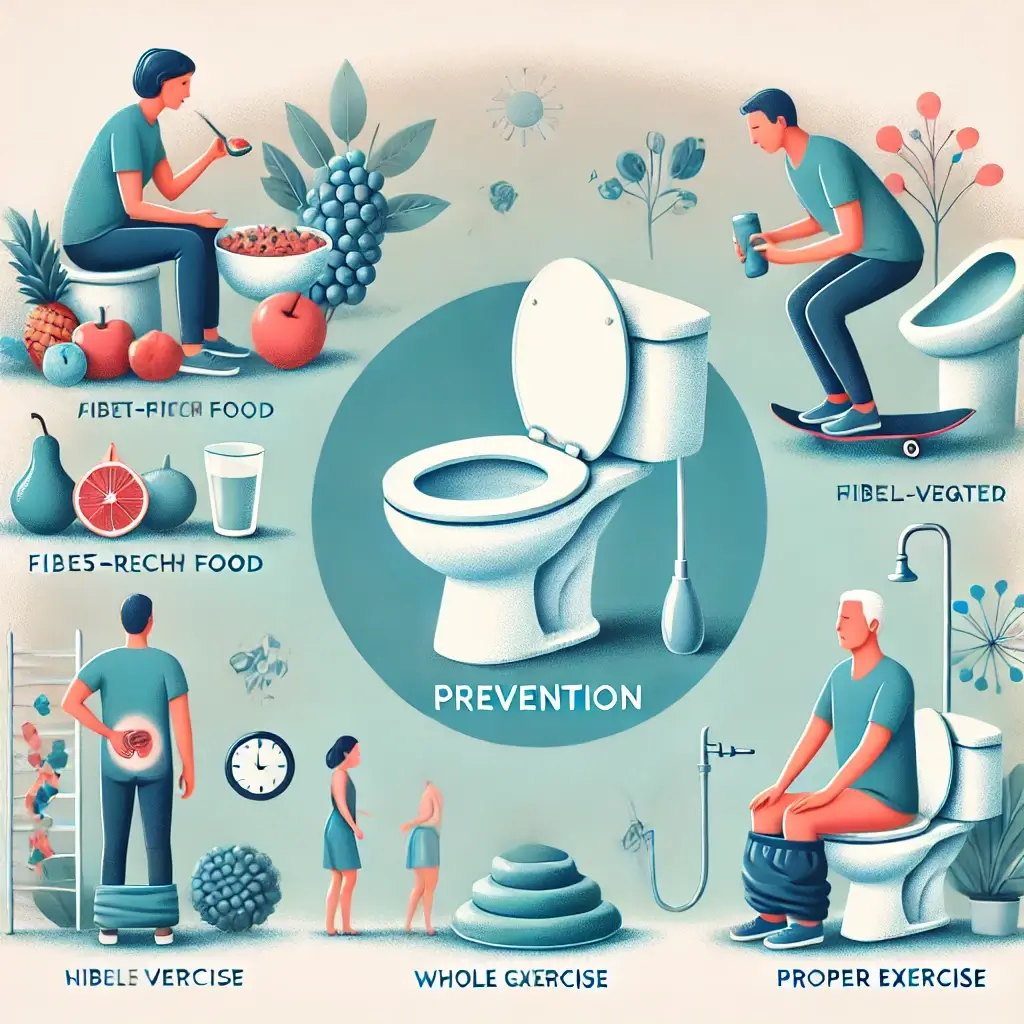Understanding Hemorrhoids and Their Impact
Hemorrhoids, or piles, represent a widespread yet often overlooked health issue. These swollen veins in the rectal and anal area affect nearly 50% of adults by the time they reach 50 years of age (Johanson & Sonnenberg, 1990). Despite their prevalence, the condition is surrounded by stigma, causing many to delay seeking help or remain unaware of preventative strategies.
Types and Symptoms of Hemorrhoids
Hemorrhoids can be classified as internal (within the rectum) or external (under the skin around the anus). They are commonly associated with symptoms like itching, discomfort, pain, and bleeding during bowel movements. Contributing factors range from chronic constipation, straining, and prolonged sitting to pregnancy and aging. However, the condition can often be prevented and effectively managed through simple lifestyle modifications and modern medical interventions.
Guide Purpose and Scope
This guide aims to demystify hemorrhoids by explaining their causes, prevention, and treatment, with a strong emphasis on research-based recommendations and practical strategies.
Prevention Through Lifestyle Changes
Preventing hemorrhoids starts with addressing their most common cause—constipation. Constipation leads to straining during bowel movements, which increases pressure on rectal veins. Research has consistently highlighted the importance of dietary fiber in mitigating this risk. A meta-analysis in the American Journal of Gastroenterology found that high-fiber diets reduce hemorrhoid symptoms, including bleeding, by over 50% (Alonso-Coello et al., 2006).
Essential Dietary and Lifestyle Recommendations
Increase Fiber Intake: Incorporate fiber-rich foods like fruits, vegetables, whole grains, and legumes into your diet. Women should aim for about 25 grams of fiber daily, while men should target 38 grams (Academy of Nutrition and Dietetics, 2021).
Hydration: Adequate water intake helps soften stools, complementing fiber’s benefits. Aim for at least 8–10 cups of water daily.
Physical Activity: Regular exercise, such as walking or yoga, promotes gut motility and reduces constipation. Sedentary lifestyles are strongly linked to an increased risk of hemorrhoids (Johanson & Sonnenberg, 1990).
Healthy Bathroom Habits: Respond promptly to the urge to defecate to avoid stool hardening. Additionally, avoid straining and consider using a stool to elevate your feet, which aligns the rectum more naturally.
Available Treatment Options
When hemorrhoids occur despite preventative efforts, a variety of treatments are available, ranging from home remedies to medical procedures.
Effective Home-Based Solutions
For mild cases, home-based treatments can provide significant relief:
Sitz Baths: Sitting in warm water for 10–15 minutes a few times daily can reduce itching and discomfort.
Topical Treatments: Creams containing hydrocortisone or witch hazel can alleviate irritation and swelling.
Pain Relievers: Over-the-counter medications like acetaminophen or ibuprofen help manage pain and inflammation.
Medical Intervention Options
For persistent or severe hemorrhoids, healthcare providers often recommend minimally invasive procedures:
Rubber Band Ligation: This outpatient procedure involves placing a rubber band around the base of the hemorrhoid to cut off its blood supply, causing it to shrink and fall off. It is effective for internal hemorrhoids (Riss et al., 2012).
Sclerotherapy: A solution is injected into the hemorrhoid to shrink it. This option is less invasive but generally suited for smaller hemorrhoids.
Infrared Coagulation: A heat-based treatment that promotes hemorrhoid shrinkage.
Surgical Treatment Methods
In cases where other treatments fail, surgery may be necessary:
Hemorrhoidectomy: A surgical procedure to remove large or prolapsed hemorrhoids. While highly effective, it involves a longer recovery period.
Stapled Hemorrhoidopexy: This procedure repositions and secures prolapsed hemorrhoidal tissue using a surgical stapler.
Early Intervention Benefits
Timely action can prevent hemorrhoids from worsening and reduce the need for invasive treatments. Persistent symptoms such as rectal bleeding should prompt immediate medical attention, as they could indicate other conditions like colorectal cancer (American Society of Colon and Rectal Surgeons, 2021).
Concluding Insights
Hemorrhoids, though uncomfortable, are a highly manageable condition with the right approach. Adopting a fiber-rich diet, staying hydrated, and maintaining regular exercise habits are essential preventative measures. For those already experiencing symptoms, home remedies and minimally invasive procedures offer relief. When managed early and effectively, the impact of hemorrhoids on quality of life can be significantly reduced. Consult a healthcare professional for persistent symptoms or tailored advice to ensure optimal care.
Final Recommendations
By prioritizing dietary adjustments, physical activity, and early medical intervention, individuals can take charge of their digestive health and minimize the risk of complications associated with hemorrhoids.
Research References
Alonso-Coello, P., Zhou, Q., Martinez-Zapata, M. J., Mills, E., Heels-Ansdell, D., Johanson, J. F., & Guyatt, G. (2006). Meta-analysis of dietary fiber treatment for symptomatic hemorrhoids. American Journal of Gastroenterology, 101(1), 181–188.
Johanson, J. F., & Sonnenberg, A. (1990). The prevalence of hemorrhoids and chronic constipation. Gastroenterology, 98(2), 380–386.
Riss, S., Weiser, F. A., Schwameis, K., Riss, T., Mittlböck, M., & Stift, A. (2012). The prevalence of hemorrhoids in adults. International Journal of Colorectal Disease, 27(1), 73–81.
American Society of Colon and Rectal Surgeons. (2021). Hemorrhoids: Symptoms and treatment options. Retrieved from www.fascrs.org.
